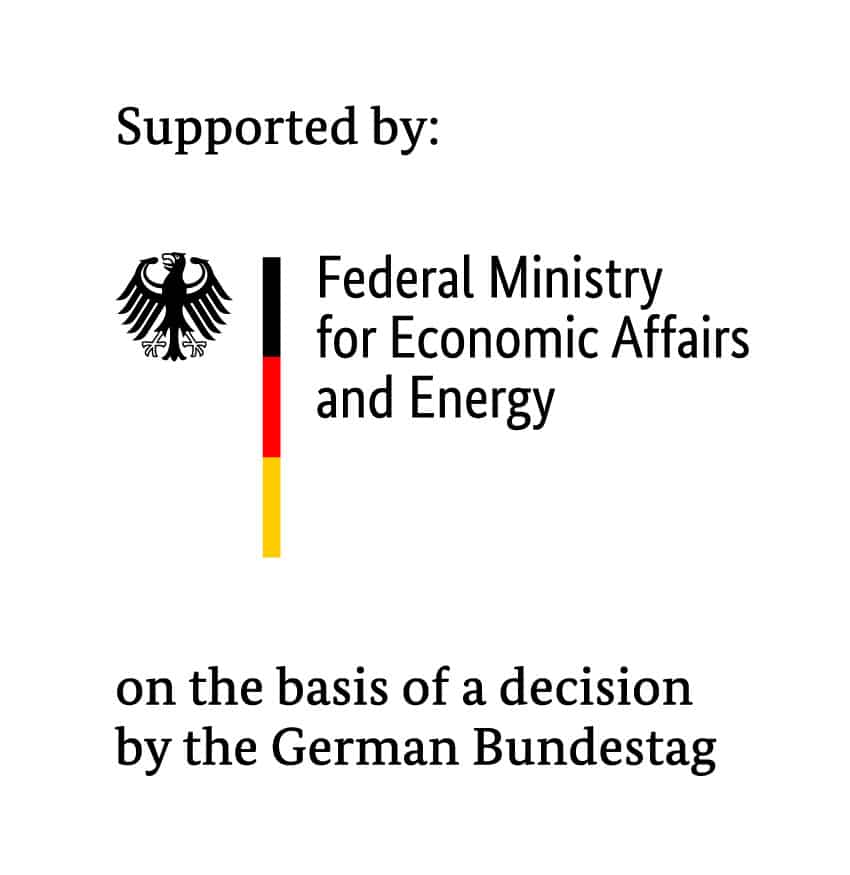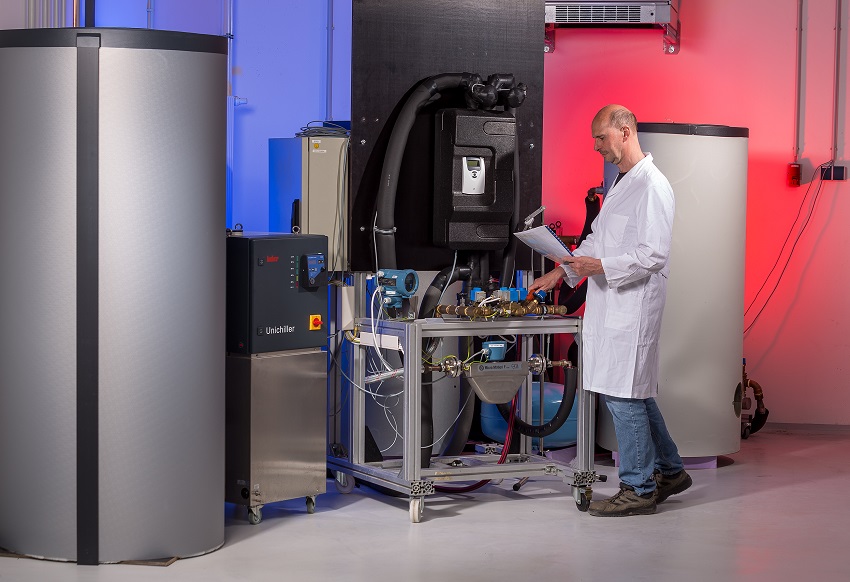
Characterization of new components in heating technology: Domestic hot water modules and dwelling stations
Contact
Carsten Lampe, Dipl.-Ing.
Tel.: +49 (0)5151-999 522
E-Mail: lampe@isfh.de
Tapping profile to determine temperature variations at a sudden change of the volume flow
Hydraulic plan for the essential components of the test rig
The market for domestic hot water modules and dwelling stations has been growing over the past few years. The reason for this growth is an increasing interest in energy efficiency methods and different hygienic aspects. The biggest advantage of these stations is that there is no more need for storing potable water. Water can be heated with a flow heater principle if needed. As a consequence, there are no more hygienic problems caused by the storing of potable water (for example formation of legionella). Dwelling stations provide structural and energetic benefits in buildings with more than one accommodation unit and central heat supply: The amount of thermal loss affected pipes outside of the accommodation units is reduced from 4 (flow and return, heated potable water and circulation) to only 2 (flow and return). So far there are no clear statements on what energetic benefits result by using a domestic hot water module and/or dwelling station. There are also no statements on what makes an effective and good station. There are no existing evaluation procedures. In order to establish new evaluation methods for these stations the ISFH created a test rig and tests stations from different manufacturers. By using existing literature and getting support from the industry the process of establishing a new standardizable evaluation method is accelerated. Assessment approach of existing processes* The assessment of warm water comfort includes a rating of the temperature regulation regarding fluctuation at constant and variable volume rates. The energy efficiency includes the electric power consumption while tapping water, the heat loss after tapping and the primary return temperature that recoils to the system and to the heat generator. The performance includes the maximal and minimal secondary volume flow at which the module still meets the comfort requirements. Project objectives Besides the expansion of existing methods there are following assessments needed: Metering characteristics at fast changing load and swelling requirements while meeting the boundary condition of typical dwelling situations (Length and Capacity of the piping to the first water plug) Power consumption including stand by and starting phase Stand by thermal losses caused by static (minimal) heating and by the supply of a potable hot water circulation Comprehensive consideration of needed flow and return temperatures (also in case of circulation) Impact of the primary temperature niveau on the final energy demand at different combinations of heat generators and buffer tanks Single evaluation of the plate heat exchanger (for example temperature and volume rate depending heat transfer coefficient) Evaluation of the reliability and operating safety (for example persistence against high temperatures and internal pressure) The final paper should be in form of an operating and assessment procedure that might serve as draft for future standardization procedures. In summary it is necessary to characterize the dynamic, stationary and thermic properties of stations. It is also necessary to evaluate the power consumption and the downtime losses. — *AEE_2010: Fink C., Kaiser A., Wagner W. (2010); Qualitätsstandards von Wohnungsstationen in Zweileiternetzen; AEE Institut für Nachhaltige Technologien, Gleisdorf SPF_2011: Ruesch F., Frank E. (2011); Untersuchung und Bewertung angepasster Lösungen zur Trinkwarmwasser- Bereitstellung – Entwicklung einer Testprozedur für Frischwassermodule; Bundesamt für Energie, Bern
Project partner



Duration
01.08.2014 – 31.11.2016
Final report
The final report of the project can be found here!
Funding
The project (FKZ 01FS14029) is funded by the German Federal Ministry for Economic Affairs and Energy (BMWi) based on a decision of the German Parliament.




